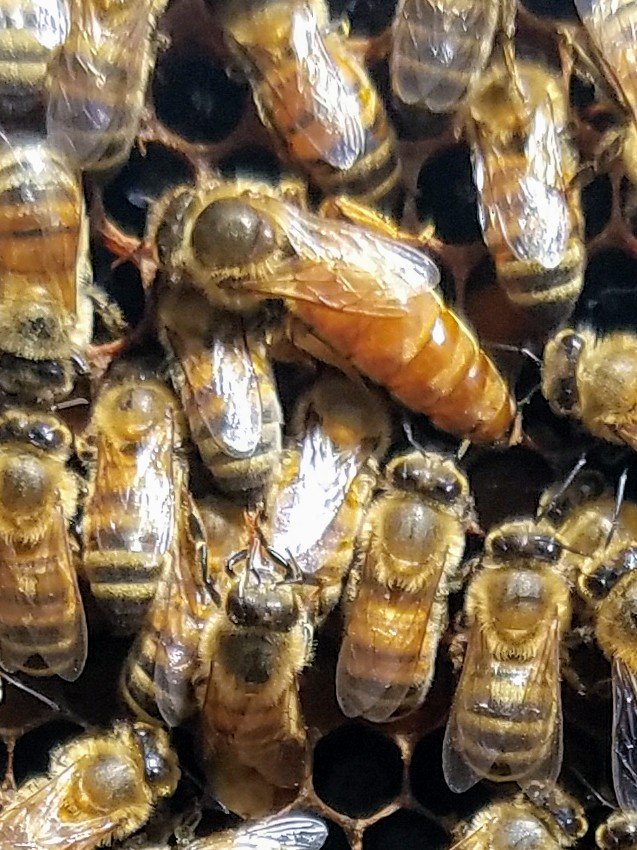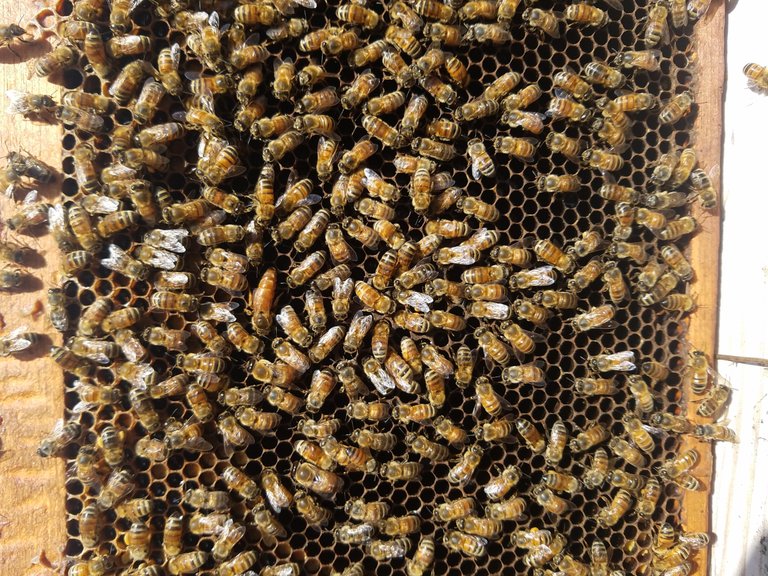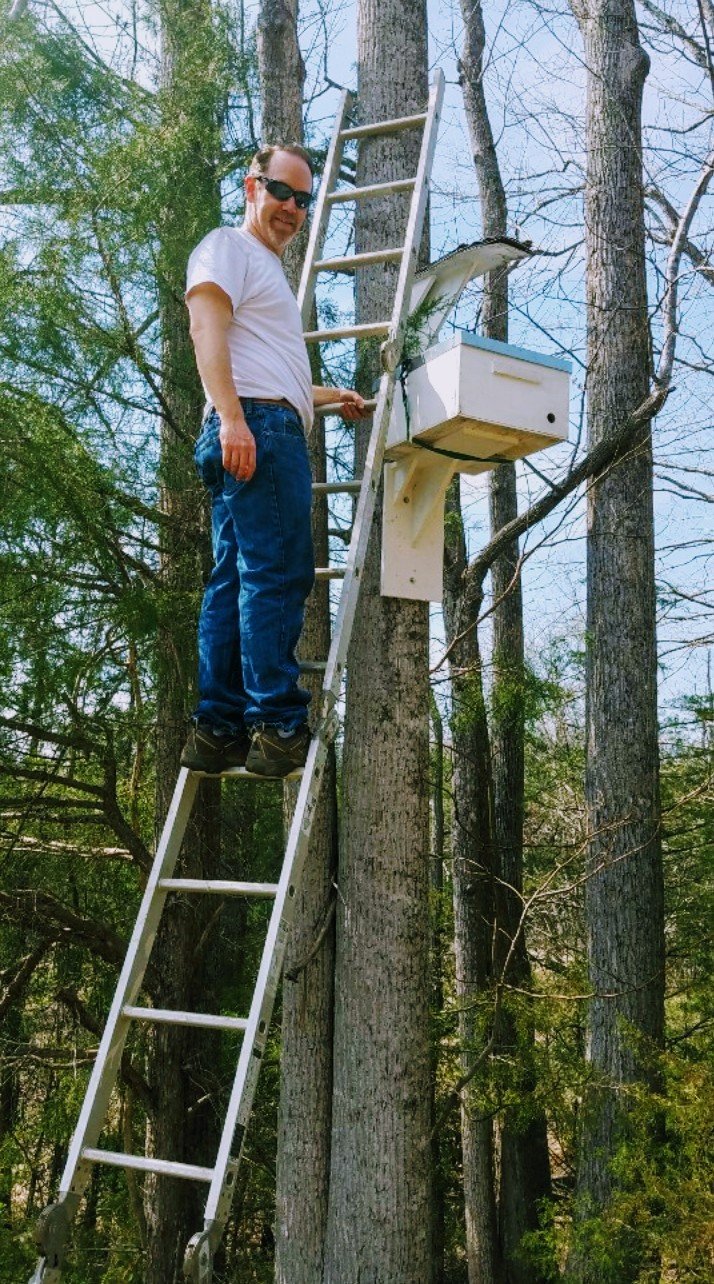
Finding the queen bee is not always this easy.
I was inspecting my two surviving hives to see if they were ready to split and happened upon this pretty queen. Her colony was full of brood and honey so I was able to split her colony in two unequal parts so that she won't be tempted to swarm, taking half the bees with her.
I like to make one half of the split rich in resources so that they can raise a strong new queen. The other half of the colony is smaller and weaker, but they have a laying queen so they can build up quickly.

Swarm season is just starting here in central Virginia. During April and May any colony that came out of the winter with a laying queen will be raising brood, bringing in pollen and nectar, and preparing to swarm.
Swarming is a reproductive process for honeybees. The colony starts by making special wax cells called queen cups that hang down from the bottom of the comb. They direct the queen to lay an egg in the cup then they extend the wax out into a peanut-shaped cell.
Queen bees hatch from a normal fertilized egg, just like workers, but the larva is fed a super rich diet of royal jelly so that she grows much faster. Just about a week after the egg hatches, the larva is ready to pupate and the workers seal the cell with a wax cap.
When the queen cells are capped the colony is committed to swarming and there is little the beekeeper can do to prevent it. You see, the newly hatched virgin queens are going to come out of their cells ready to fight to the death to become the new queen of the colony. If the mother queen can't escape in a swarm, she will certainly be murdered by one of her daughters.
Laying queens can't fly because their ovaries are too heavy, so the workers have to put the mother queen on a diet. They stop feeding her and chase her around so that she can't release any more eggs. If she stops moving they bite her legs and force her to keep moving.
During this period, some of the older workers start scouting for a new place to live.
Hollow trees are attractive locations for swarms, but any dry cavity will do. Honeybees like a cavity of about 20 liters with a single opening so the wind doesn't blow through. They also like a home that is up off the ground about 3 meters and facing South or East. If the cavity smells like bees have previously lived in it, that is very attractive. They are also fond of the smell of lemongrass, which is supposedly similar to the pheromone that queens produce.

When Hive forked from Steem, it did something similar to what honeybee swarms do. No one bee makes the decision to swarm. The workers collectively decide when the time is right. When the homeless swarm first leaves the old hive, they usually cluster on a nearby branch to regroup while the scouts teach the other bees how to find the likely new homes.

The scouts fly back and forth between their favorite new home and the homeless cluster of bees. They communicate the direction and distance to the new home using a waggle dance, which other bees can observe and learn from. In the Hive/swarm analogy, the scout bees are like the witnesses who led us from Steem to Hive. They can't compel their sister's to follow them to a new location. All they can do is help the group consider all of the available options. When a critical mass of group members reaches a consensus, the entire group picks up and moves to a new home.
There is one important lesson that the bees can't teach Hive about swarming. Swarming is dangerous for the colony. If the new swarm can't come to consensus on where to live, the swarm will remain homeless until it withers and dies. The bees that participate in the swarm are full of energy when they push their queen out the door and take off into the big wide world. Their best chance for survival is to quickly settle on a new home and harness their stored energy to build the infrastructure that will allow them to thrive.
Hive certainly feels like it is an energetic swarm that has found a suitable home. I sense a renewed sense of purpose and a lot of stored energy that is poised to make something great.
Thanks for taking care of the Bees. Very informative post about them and queens habits.